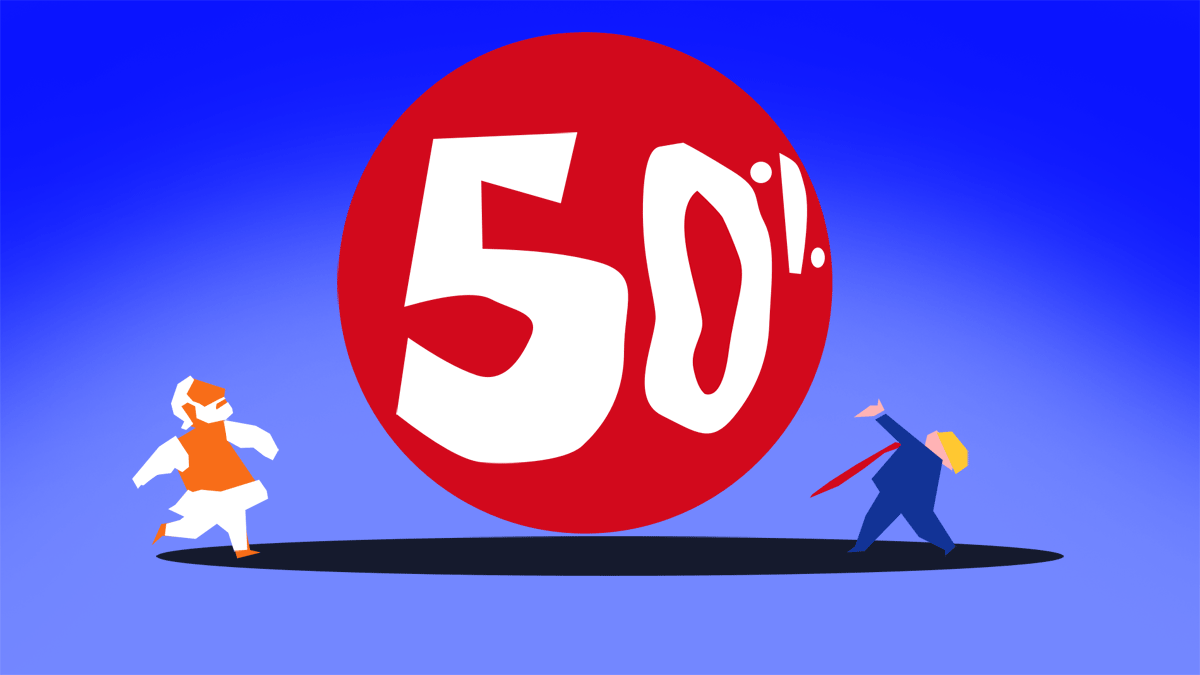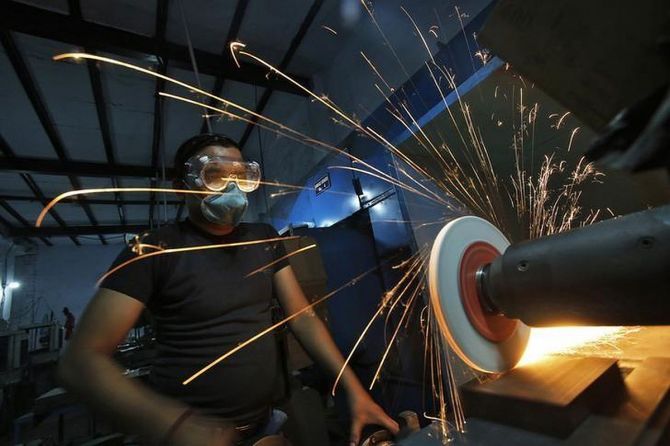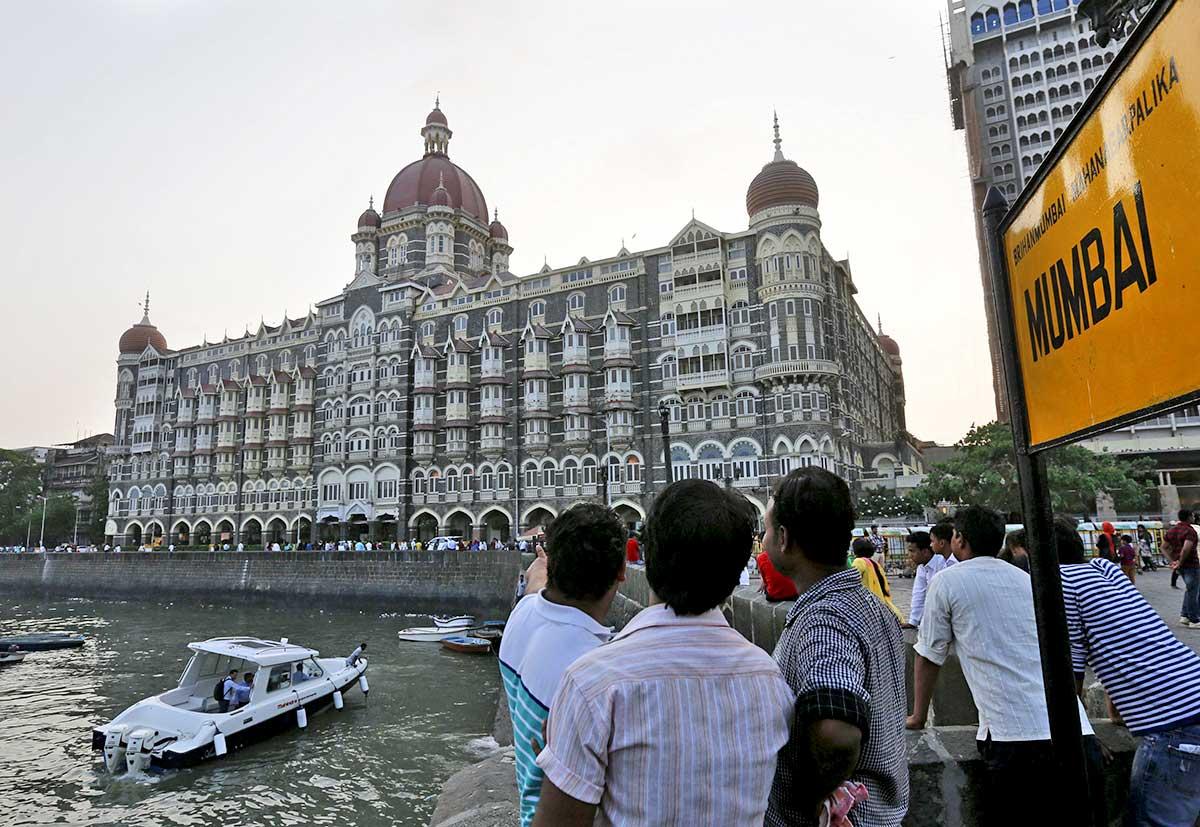Businesses are testing new markets, tapping into domestic demand, and pushing the government for relief.

Illustration: Dominic Xavier/Rediff
The 50 per cent tariff on Indian exports to the US has exporters on edge.
From scaling back production to fears of job losses, the ripple effects are spreading across industries.
Yet, businesses are also recalibrating: Testing new markets, tapping into domestic demand, and pushing the government for relief.
MSMEs: Looking for a lifeline
The micro, small and medium enterprises (MSME) sector is monitoring the tariff impact and may approach the government with suggestions, said Anil Bhardwaj, secretary general, Federation of Indian MSMEs.
“For now, we are observing the immediate fallout, though we’re prepared for different scenarios. By next week, we’ll seek government support, particularly funds for research on markets beyond the US,” Bhardwaj told Business Standard.
The short-term hit will be severe for MSME-dominated sectors such as textile, leather, handicraft, and jewellery.
“In apparel and leather, we’re competing head-on with Vietnam and Bangladesh, both at 20 per cent duty,” he said.
Vinod Kumar, president of the India SME Forum, said outreach to about 100,000 members has drawn 1,035 responses, with entrepreneurs already mapping ways to cope with the tariffs.
Central to industry demands is a proposed Rs 25,000 crore financial support mechanism under the Export Promotion Mission (2025-2031), said Hemant Jain, president, PHD Chamber of Commerce and Industry.

Photograph: Anindito Mukherjee/Reuters
Textiles: Reweaving the export map
Textiles and apparel contribute around 2 per cent to gross domestic product and provide massive employment.
The US accounts for 28 per cent of India’s textile and apparel exports.
To soften the blow, the government has identified 40 countries for a renewed export push through Indian missions.
Industry, meanwhile, has drawn up a wish list: export incentives, targeted support for Europe and the UK ahead of free trade agreements, and banking sector relief.
The Confederation of Indian Textile Industry (CITI) has sought immediate support.
“Developing new markets takes time. We’re looking at the European Union and the UK, among others,” said CITI Secretary General Chandrima Chatterjee.
Industry bodies have also urged talks with the US for zero-duty access on select products where supply chains are complementary.
Some companies are pivoting to India to cushion the hit. Kitex Garments, a Kerala-based exporter of kids’ clothing, has launched its US-quality babywear brand Little Star in India to offset weak US demand.

IMAGE: A woman works at a garment factory in Tamil Nadu. Photograph: Francis Mascarenhas/Reuters
Diamonds: A cut under pressure
In Surat, the world’s diamond finishing hub, the full impact will surface in three months, once existing orders are cleared.
The question is whether American buyers can afford diamonds after the tariff hike.
The city employs nearly 800,000 artisans across 5,000 cutting and polishing units. The US remains the largest destination, buying more than three of every 10 Indian-polished diamonds.
In April, the Trump administration levied a 26 per cent duty on gems and jewellery. On August 27, it raised this further, pushing the effective rate to 55 per cent.
Diamond polishers say they’ve already cut production by up to 40 per cent. Layoffs are looming.
“Operators will now run only four- to five-hour shifts instead of eight to twelve. Workers may be paid per stone polished, not monthly,” said a local trader.
In 2024-2025, India’s gem and diamond exports fell 11.2 per cent to $28.67 billion. Shipments to the US shrank 6 per cent to $9.24 billion.
Industry leaders say expanding the client base is the only solution, though the global slowdown makes this difficult.

IMAGE: A diamond set on display during the CARATS Surat Diamond Expo. Photograph: ANI Photo
Tea: Brewing uncertainty

Indian tea buyers in the US are in wait-and-watch mode. Some are pushing for price cuts, others are considering alternative origins.
India exported 16.8 million kilograms of tea to the US in 2024 — 6.6 per cent of its total shipments, but 9.4 per cent by value. The basket ranges from organic speciality teas to bulk.
“The US is an important market for us, with diverse buyers,” said Anshuman Kanoria, chairman, Indian Tea Exporters Association.
“There have been cancellations, but most buyers are waiting. Multi-origin blends are at risk of reformulation, which could mean a long-term loss of demand.”
Some importers are demanding price cuts of 20 to 25 per cent. “But there’s no margin to absorb that,” he said.
Dipak Shah, chairman of the South India Tea Exporters Association, said, “A lot of value-added teas go from the South. This is a big jolt — everything has come to a standstill.”
At a 25 per cent tariff, exporters could still manage. At 50 per cent, “nothing is exportable to the US,” said Hemant Bangur, chairman, Indian Tea Association.
Kanoria added that exporters would work with the government to find new markets, including China, to offset short-term losses.
“It’s also an opportunity to broaden our reach.”
Feature Presentation: Aslam Hunani/Rediff


